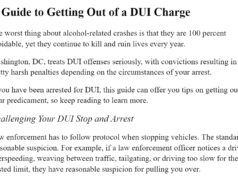SPONSORED CONTENT
By Christine Gertsch, a domestic violence attorney barred in Connecticut, New York and New Jersey.
The State of Connecticut saw an increase in the number of reported domestic violence cases last year–an increase that domestic violence advocates and law enforcement say is a result of increased awareness and not an increase in abuse.
According to statistics from the Connecticut Coalition Against Domestic Violence, last year saw a five percent increase in the number of calls that were received by their hotline over the year before. There was a 10 percent increase in the number of victims the organization was able to provide services to.
Local law enforcement also recorded increases in domestic violence reports. In Danbury Connecticut, 1,530 domestic violence calls were recorded, a 23 percent increase over the number of calls received in 2015. The town of Redding had a 59 percent increase, going from 102 domestic violence calls in 2015 to 162 calls in 2016.
Connecticut’s Lethality Assessment Program
As many of the best Danbury & Stamford Connecticut domestic violence criminal lawyers and attorneys know, one of the programs which has had the most profound effect on combating domestic violence in Connecticut is the Lethality Assessment Program (LAP).
LAP assists law enforcement in making immediate assessments of what the possible risk level is when they respond to domestic calls. There are 11 questions that help the responding officer make that determination.
If a Connecticut domestic violence victim believes there is a future risk of domestic violence, a Connecticut court-appointed domestic violence victim advocate is called to the scene in order to assist in developing a safety plan if needed and providing services.
The program not only gives law enforcement the tools to assess a situation, but also helps reassure Connecticut domestic violence victims that if they call for help, they will be helped.
The program began in Maryland in 2005 and has spread throughout the country. In 2014, there were 14 police departments in Connecticut utilizing the program, and as of today, there are now at least 100.
What Victims Can Expect Immediately Following a Connecticut Domestic Violence Arrest
Prior to LAP implementation, when an officer would respond to a domestic violence call, he would leave a card that had contact information on organizations where the victim could get help. The problem with that system was that it was left entirely up to the victim to seek out that help on their own.
Given the known dynamic of the domestic violence cycle, it is not surprising that many victims were too afraid to seek out that help – often resulting in tragic consequences.
In addition to LAP and other crisis intervention training received by police officers, there has also been a lot of education and awareness programs focused on communities, including communities where many immigrants live, both documented and undocumented.
Other Connecticut programs focus on educating boys and young men, particularly those involved in organized sports. There are other programs which work with all children at all grade levels.
And many Connecticut domestic violence victim advocates feel it is important to involve the community in these educational programs, so have begun hosting information programs for parents, educators, healthcare providers, and businesses.
Domestic violence knows no boundaries and affects every community. It is critical that victims know that there is help for them and their children; that there is a way out and they do not have to stay in dangerous – often deadly – situations.













